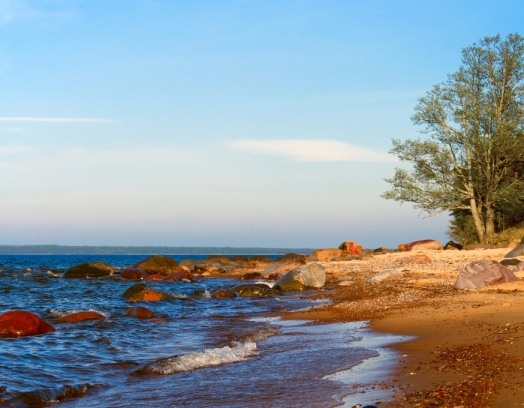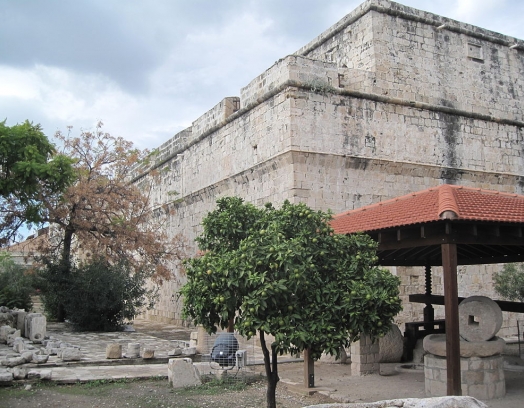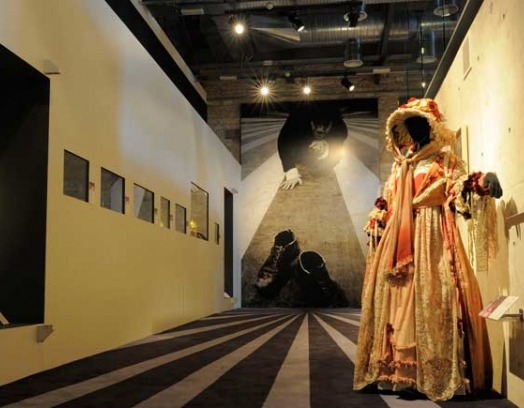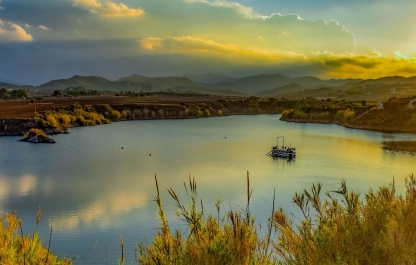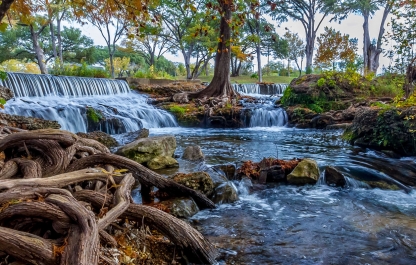Trooditissa Monastery, which in Greek means: “the one, who lives in the Troodos Mountains”, is situated in a cedar valley 1500 meters above sea level. Travelers and religious pilgrims have compared the area’s scenery to that of the Swiss Alps.
There is a legend behind the founding of the monastery. During the Byzantine Iconoclasm of the 8th century, one young man had escaped Constantinople with an icon of the Virgin Mary created by the Apostle Luca himself. He had made it to Cyprus and spent the subsequent 25 years at the Monastery of St. Nicholas. Until one night the Virgin Mary visited him in his sleep and instructed him to place the rescued icon into the crack of a wild cliff, which had for several months been oozing a mysterious light. In the morning, the owner of the icon had searched out the cave and decided to make a home there. As time went by, more hermits came to join him in the cave.
The cave has survived to this day and can be found very close to the Monastery. Candlelight streaming out of the narrow cell reminds us of the hermit’s feat.
The church, which has been sanctified in the name of the Virgin Mary, was built in the cedar valley of the Troodos Mountains in the beginning of the 11th century.
The first documentary evidence of the existence of the monastery dates back to the 16th century. This evidence reveals the fact that the monastery has undergone two periods of reconstruction following destructive forest fires and that by the beginning of the 18th century it had become almost completely lifeless. Vasily Grigorovich-Barsky wrote in his travel memoir that the only person he came across at the monastery was a lone monk who was struggling to keep the place afloat.
Things started getting back on track at the beginning of the 19th century when more monks came to live at the monastery. The beginning of the 20th century brought a revival to the monastery: new guesthouses and other buildings appeared and the large halls were decorated with fireplaces.
Today the monastery is home to the Church of St. Neophytos, the Church of St. Afanasy, Patriarch of Alexandria and St. Kirill, as well as a small church dedicated to the Presentation of Jesus at the Temple.
The main church dedicated to the Virgin Mary of Troodos was rebuilt in 1731. The three-nave building is covered with a tiled roof, which rests on a wooden foundation that can be easily seen from the inside. The church is home to the monastery’s main relic – the icon of the Virgin Mary of Troodos, which, as the legend says, was created by the Apostle Luca following the death of the Virgin Mary and which was acquired thanks to a divine sign. The icon is located to the left of the iconostasis. It had previously been kept behind a riza and the fact that religious pilgrims can now see it is a relatively new development.
The iconostasis was created in 1844 by Hadjidimitriu Taliadoru. It is decorated with angels, cherubim, dragons and winged lions as well as birds pecking at grapes.
Next to the icon of the Virgin Mary of Troodos is a leather belt with buckles encrusted with precious stones. This belt was gifted to the monastery in the 19th century by an unknown woman, who was miraculously cured from infertility. Today many believe that the belt is capable of curing many diseases.
Another reminder of a miracle is a grey rock on the reverse side of the icon. Travel memoirs of Vasily Grigorovich-Barsky reveal the story behind the rock. A long time ago parents of a sick child preyed to the Virgin Mary asking Her to cure their son. They promised that if he were to get better, then they would leave him at the monastery so he could serve God. When the boy became better, the parents thought of secretly taking him home with them. As soon as that idea occurred to them, one of the rocks in the wall became loose and went flying down toward their son. But the icon had miraculously leaned forward and protected the boy from the falling rock. Ever since that moment, the rock became one of the church relics.
The six-sided pulpit in the church is engraved and gold-plated. Each of its side features images of Christ and the evangelists. The wooden chest that is kept behind the pulpit contains an entombment cover created by Russian craftsmen that was gifted to the abbot of the monastery at the beginning of the 20th century.
To the right of the pulpit there is the “Queen of Angels” icon, which depicts the enthroned Virgin Mary holding Baby Jesus while being surrounded by angels. The author of the icon, monk Afanasy became the monastery’s abbot in mid-20th century.
Some of the older icons include images of Christ Pantocrator, Virgin Hodegetria, John the Baptist and Archangel Michael and Gabriel. All of these icons are part of the Veneration tier.
The Feasts tier features images influenced by Italian art brought on by the Venetian period.
To the right of the iconostasis there is an image of the Virgin Mary created by Ioann Cornarro – a Cypriot artist from the 18th century. The frescoes that decorate the church walls were created by Fivos Irakleos, another Cypriot artist.
The monks who live at the monastery today paint icons, bake bread, cultivate the land and prepare flower water, which has become the pride and joy of the local monastery gardens.


